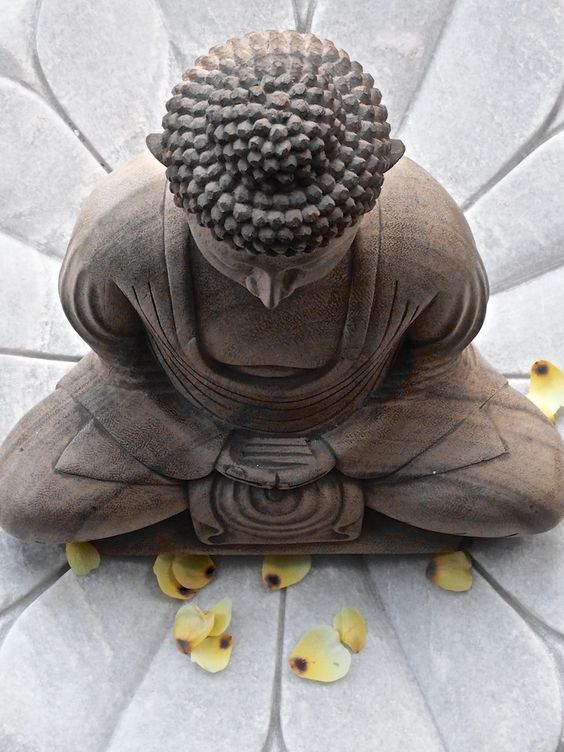By Braja Sorensen
It is said that a journey of a thousand miles begins with one step.
Were it possible to view beforehand the path our lives would take when we make a choice, still perhaps none of us would believe the outcome, or the adventure and experiences that choice awarded us. Perhaps some would not even make that choice, were they to know. So it was in the 1980s when I took my first step on the journey that would change the rest of my life—would become the rest of my life.
In those days, while I rarely had a conscious thought toward either subject, I might have spontaneously admitted (if asked) that India was for washed-up hippies, yoga was boring and meditation was eye-rolling. Now that I think of it, I still might say the same…
Which perhaps goes a long way in explaining my mood toward my own practice of yoga—both bhakti and astanga. I have always shunned trends, I shudder at being one of a mass crowd of thought or action; I am basically a social hermit, am abundantly anti-institutional and I rarely find one in a group who might be there for the same reasons I am.
In the ’80s I set out across Australia from my home town of Adelaide in search of what could only be explained as life. Any other explanation was after the fact: I didn’t know enough of what was available or what ailed me to be able to say what it was I needed or sought—only that it had to be something of substance. I find myself now, in my fifties, being drawn to writing on the subject of travel, but I’m not a travel writer: I am more interested in the journeys of the internal landscape rather than geographical locations.
So it was, then, that in my youth I sought not an adventure, but a purpose.
Despite my humorous aversion to Indiadom, Fate chose to serve my humor back to me, amplified a million times: that journey ultimately led to living in India and a life of meditational yoga. Within a year of leaving my job, my home, and all those things that claimed to represent security, solidness and adult choices, I had found what would write my life’s story, even if I didn’t recognize it when I saw it.
My brothers had been practicing bhakti-yoga for some years, and it was their influence—and a visit to the outback town I lived in—that nailed it. Arming me with everything I needed to learn and read and practice bhakti-yoga, my second brother and his wife left that town after a brief visit, in a trail of red dust that took my wondering mind with it. In the decades since, I have come to love, respect, and appreciate more and more the practical aspects of bhakti-yoga in its application: the most intriguing aspect of which is its abililty to lend itself to every act or thought or deed.
In regard to Fate’s humor: I am in the latter half of my second decade of living in India—something that would have given the twenty-something girl I was a good laugh. I have practiced Iyengar yoga since my thirties—something that girl might have flipped off with “well, you are getting older…” And I have been a practitioner of mantra meditation for almost three decades—something the girl back then was looking for and had already but just didn’t realize it.
Despite how it is presented, packaged, showcased or promoted, bhakti-yoga isn’t a fad, a religion, or any other adjective that only limits its depth, range and beauty. It is, rather, an ancient practice which boldly claims the science of love as both its source and goal; a science whose formula is devotion to the object of love. And the ulimate devotion and love is to the Supreme. Mine is Sri Radha, the beloved of Krishna and the personification of bhakti.
Yet naming an object of one’s affection does not make that object merely one’s religion: the practice of the science of bhakti includes every act, thought, deed, person, place, time and breath as elements of one’s devotion.
It incorporates speech, the written word, art, music, fabric, design, food, architecture, history, stories, literature and song. In other words, it encompasses life: that everything we do and think and hope and want and breathe and imagine can be part of developing our affection and love is surely the science in which we all want a doctorate. Sri Radha and the object of her own affection, Krishna, are the ultimate professors in all those arts and sciences.
And the Bhagavad Gita and Patanjali’s Yoga Sutras encompass the process of that science: from the depth of information into the workings of the breath, the organs, and the muscles, to the subtler science of the mind and psyche of the yoga practitioner in the Sutras, to the Gita’s revelations of how knowledge of these fields directs our devotional process and its scientific expansions on the science of devotion. Combined, these two ancient books are the most wonderful and practical experience of yoga that I could never have imagined as that twenty-something girl in the outback rolling her eyes and bored at the thought of a rubber mat and gymnastic movements.
If five years ago I would have looked into a crystal ball and peeked into a future in which I had co-authored a book on the Bhagavad Gita and Patanjali’s Yoga Sutras, it would have seemed like a dream to me. And yet, that’s exactly what happened. Last month Catherine Ghosh and I released Yoga in the Gita: the culmination of reflections we first shared every week in an online magazine column, which then evolved to our own blog, and (through our readers’ continued requests) now a book.
As I reminisce, I see how the contents of this book reflect my own journey, and that of my co-author’s, and how intimately Catherine and I relate to these subjects. For we both came to yoga before it was trendy—in a time when yoga was unfashionable compared to aerobic workouts. And while we don’t claim to have all the answers, and didn’t labor under the pretension that ours are the ultimate in spiritual or practical realizations on yoga, we did draw from decades worth of genuinely doing our best to live a bhakti-yoga lifestyle, for whatever that’s worth.
That means a 24 hour-a-day practice. It’s a little different than emerging from a yoga teacher’s training program with a certificate that says you’re a yoga teacher after a few weeks. There’s something to be said about that.
For bhakti and astanga-yoga are sciences of sorts: their practice and application demand of those who offer guidance on either to be practiced themselves, qualified by the process, and knowledgable not merely because of a certificate from a local yoga studio, but through the study, practice, and lifetime experience of the genuine yoga process as it’s been understood for thousands of years.
I hope everyone gets to write a book like Yoga in the Gita. Because everyone deserves to look back and see how their life unfolded in the hands of a science whose field is love, whose formula is devotion, and whose goal and result is the same as its practice: loving devotion.
Braja Sorensen: I am a writer, author, poet, photographer, home-brewed gourmand and cow lover hailing from the beaches of Australia. I’ve lived in on the banks of the sacred Ganges River in Mayapur, West Bengal, since the turn of the century. My latest book is Yoga in the Gita, with writing partner Catherine Ghosh. Lost & Found in India was my first published book, released in India in 2013 (Hay House International), then rereleased internationally in 2015 (Torchlight Publications). It was my first mainstream book, the second is Mad & Divine (2015). I have other published works in the Vaishnava genre: 18 Days: Sri Panca-tattva’s Mayapur-lila (2004), and India & Beyond: Plane Reading for Part-time Babajis (2012). I worked for some years on a nine-volume treatise on the sacred lands of India through the Vaishnava perspective of pastime, pilgrimage, and philosophy, Nava-vraja-mahima, authored by Sivarama Swami (Lal Publishing, 2013). I am currently working on five books for publication in 2016 & 2017: Of Noble Blood, my first novel; Kavita: A Search for Transcendence, my first novella; A Conscious Life, an A-Z daily handbook from the Bhagavad-gita; A River Runs Through Me: Outer Trauma, Inner Healing; and Tryst: Ghazals of Love. I write regularly for several online and print magazines internationally while waiting for Vogue to see the light and give me a damned column. Follow me here on my website: www.brajasorensen.com.
Photo: (source)
Editor: Dana Gornall
Comments
- Zen Buddhism and the Blues - April 5, 2024
- Escaping from Jehovah’s Witnesses through a Buddhist Path - March 24, 2024
- Getting to Know Holly Herring - February 29, 2024





